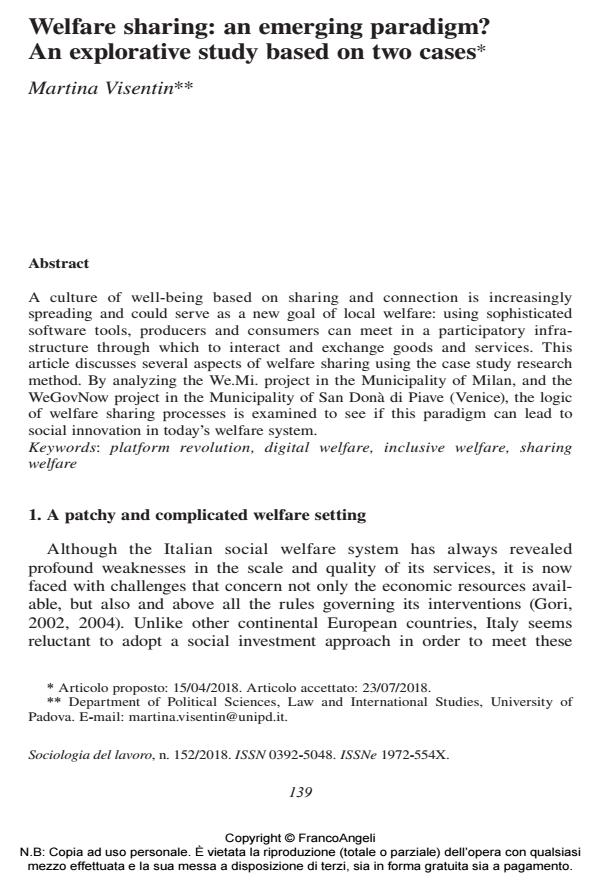Welfare sharing: an emerging paradigm? An explorative study based on two cases
Journal title SOCIOLOGIA DEL LAVORO
Author/s Martina Visentin
Publishing Year 2018 Issue 2018/152
Language English Pages 16 P. 139-154 File size 113 KB
DOI 10.3280/SL2018-152008
DOI is like a bar code for intellectual property: to have more infomation
click here
Below, you can see the article first page
If you want to buy this article in PDF format, you can do it, following the instructions to buy download credits

FrancoAngeli is member of Publishers International Linking Association, Inc (PILA), a not-for-profit association which run the CrossRef service enabling links to and from online scholarly content.
A culture of well-being based on sharing and connection is increasingly spreading and could serve as a new goal of local welfare: using sophisticated software tools, producers and consumers can meet in a participatory infra¬structure through which to interact and exchange goods and services. This article discusses several aspects of welfare sharing using the case study research method. By analyzing the We.Mi. project in the Municipality of Milan, and the WeGovNow project in the Municipality of San Donà di Piave (Venice), the logic of welfare sharing processes is examined to see if this paradigm can lead to social innovation in today’s welfare system.
Keywords: Platform revolution, digital welfare, inclusive welfare, sharing welfare
- Digital divide, e-government and trust in public service: The key role of education Diego Mesa, in Frontiers in Sociology 1140416/2023
DOI: 10.3389/fsoc.2023.1140416 - Exploring Social Innovation (SI) Within the Research Contexts of Higher Education, Healthcare, and Welfare Services—A Scoping Review Anne Marie Lunde Husebø, Marianne Storm, Atle Ødegård, Charlotte Wegener, Marie Aakjær, Anne Lyngby Pedersen, Maja Boelsmand Østergaard, Elisabeth Willumsen, in Nordic Journal of Social Research /2021 pp.72
DOI: 10.7577/njsr.3455
Martina Visentin, Welfare sharing: an emerging paradigm? An explorative study based on two cases in "SOCIOLOGIA DEL LAVORO " 152/2018, pp 139-154, DOI: 10.3280/SL2018-152008